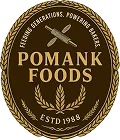In today’s challenging economic environment, operational efficiency has become essential for bakery profitability. However, achieving efficiency without compromising product quality requires a strategic approach. This article explores practical methods for Ghanaian bakeries to optimize operations while maintaining or enhancing product excellence.
Energy Management: Your Biggest Opportunity
Energy costs represent 15-25% of operational expenses for the average Ghanaian bakery. Strategic energy management can significantly impact profitability:
- Oven Optimization: Proper maintenance and loading practices can reduce energy consumption by 15-20%. Simple practices include:
- Full-capacity baking whenever possible
- Regular cleaning of heating elements and seals
- Calibrated temperature settings
- Scheduled maintenance to ensure efficiency
- Alternative Energy Solutions: Bakeries implementing solar power for lighting and non-baking operations report 30-40% reductions in electricity costs with payback periods of 24-36 months.
- Production Scheduling: Concentrating baking during off-peak hours can reduce both energy costs and improve production efficiency. Some bakeries report 15% cost savings through optimized scheduling.
- Equipment Selection: When upgrading equipment, energy efficiency ratings should be a primary consideration. More efficient ovens typically deliver ROI within 18-24 months through reduced operating costs.
Ingredient Management and Waste Reduction
Ingredients typically represent 40-50% of a bakery’s costs, making effective management essential:
- Accurate Measurement: Implementing precise weighing systems can reduce ingredient waste by 5-10%. Digital scales with 1g accuracy are now affordable for most bakeries.
- Inventory Systems: Structured inventory management prevents both stockouts and spoilage. FIFO (First In, First Out) systems ensure ingredients are used before expiration.
- Recipe Standardization: Documented, standardized recipes reduce variations and waste while ensuring consistent quality. Digital or printed recipe cards improve compliance.
- Byproduct Utilization: Creative use of trimmings and excess can create new revenue streams. Examples include bread crumbs, croutons, or bread pudding from unsold bread.
Production Workflow Optimization
Efficient workflow design can significantly improve labor productivity:
- Workspace Layout: Arranging equipment and workstations to minimize movement can increase productivity by 15-25%. Time-motion studies can identify improvement opportunities.
- Batch Optimization: Determining optimal batch sizes balances efficiency with freshness. Many bakeries find that moderately larger batches with more frequent baking provides the best balance.
- Cross-Training: Staff capable of handling multiple roles provides scheduling flexibility and reduces bottlenecks during peak periods.
- Production Planning: Systematic planning based on historical sales data reduces both waste and stockouts. Even simple spreadsheet-based planning tools can dramatically improve efficiency.
Quality Control Systems
Efficient operations require consistent quality to avoid waste and rework:
- Standardized Procedures: Documented procedures for critical processes ensure consistency regardless of which staff member is working.
- Check Points: Establishing quality check points at key production stages prevents problems from cascading through the process.
- Feedback Loops: Systems to capture and address quality issues help prevent recurrence and drive continuous improvement.
- Supplier Management: Working with reliable suppliers who provide consistent ingredients is fundamental to operational efficiency.
Case Study: Operational Transformation
A mid-sized bakery in Takoradi implemented a comprehensive operational efficiency program with remarkable results:
- Energy costs reduced by 32% through oven optimization and solar installation
- Ingredient waste reduced by 15% through measurement and inventory improvements
- Labor productivity increased by 20% through workflow redesign
- Overall profitability improved by 45% while product quality ratings increased
The key insight: efficiency and quality are not opposing goals but complementary aspects of operational excellence.
Digital Tools for Modern Bakery Management
Technology is increasingly accessible to bakeries of all sizes:
- Inventory Apps: Simple smartphone applications can track ingredient levels, usage, and ordering needs.
- Point-of-Sale Systems: Digital sales tracking provides valuable data for production planning and customer preferences.
- WhatsApp Business: This accessible platform allows efficient ordering, customer communication, and marketing.
- Production Scheduling Tools: Even basic spreadsheets can dramatically improve production planning and efficiency.
Implementation Strategy: Start Small, Scale Up
For bakeries new to operational optimization, a phased approach is recommended:
- Assessment: Begin with a thorough review of current operations to identify the highest-impact improvement opportunities.
- Prioritization: Focus initially on changes that require minimal investment but offer significant returns.
- Pilot Implementation: Test improvements in limited areas before full deployment.
- Measurement: Establish clear metrics to evaluate the impact of changes.
- Continuous Improvement: Create a culture of ongoing optimization rather than a one-time initiative.
Operational excellence is not about cutting corners but about eliminating waste and inefficiency while enhancing your ability to deliver quality products consistently. By focusing on these key operational areas, Ghanaian bakeries can improve profitability while maintaining or enhancing the product quality that builds customer loyalty and brand reputation.


